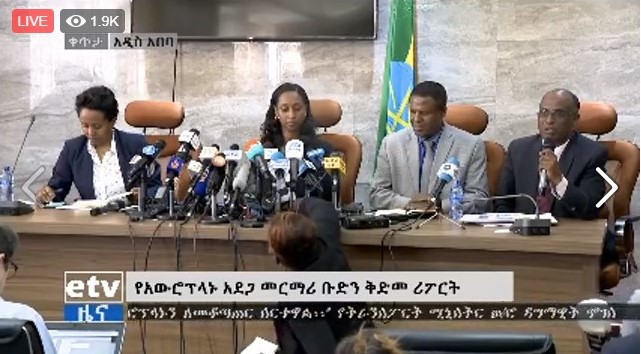Ethiopian plane received repeated nose-down commands
04 April, 2019
3 min read
By joining our newsletter, you agree to our Privacy Policy


A preliminary report into the March 10 fatal crash of an Ethiopian Airlines Boeing 737 MAX says the aircraft was subject to repetitive nose-down commands.
Initial reports from a press conference by Ethiopian officials also say the crew performed all of the procedures provided by manufacturer Boeing but was unable to control the aircraft.
Information so far indicated the take-off of the plane appeared “very normal”, officials said.
However, the Ethiopian investigators had yet to publicly release the report on the Web
The Ethiopians have issued two safety recommendation on the basis of their investigations so far.
One recommends the flight control system be reviewed by the manufacturer, something Boeing has been doing since the crash of a Lion Air plane last October.
The other recommends that aviation authorities review changes to the flight control system ahead of the release of Boeing 737 MAX aircraft “to operations”.
CNN reported that accident investigators had not identified any damage to the aircraft sensors that could have contributed the crash
They had also not identified any structural design problem with the aircraft, the news service said.
An Ethiopian Airlines statement said the preliminary report clearly showed its pilots followed Boeing recommended and US Federal Aviation Administration emergency procedures.
"Despite their hard work and full compliance with the emergency procedures, it was very unfortunate that they could not recover the airplane from the persistence of nose-diving,'' it said.
The airline said it was "very proud of our pilots' compliances to follow the emergency procedures and high level of professional performances in such extremely difficult situations".
Transport Minister Dagmawit Moses said the preliminary report had been compiled in an "integrated manner" with other international aviation agencies.
"So we don't have any reservations, so far, from different stakeholders which were engaged in the investigation process,'' she said.
Another official said Ethiopian authorities expected the investigation to take up to a year, depending on how complicated it proved, and said there would be no interference from Ethiopian Airlines.
However, the airline would provide advisors, as would European safety agency EASA, Boeing and the US National Transportation Safety Board.
"There is no problem with them and we worked together and they advised us,'' he said. "But to be sure we are the leader of this investigation and we are an independent entity to investigate this..."
Moses said the preliminary report was based on information from the cockpit voice and flight data recorders as well as additional documents gathered by the civil aviation authority and evidence from the accident site.
"All in all, the major objective of this investigation is to make sure that there is safety in the aviation sector,'' she said.
Despite the conciliatory comments in the wake of suggestions of tension between US and Ethiopian investigators, the way in which the Ethiopians presented what is an internationally significant report is likely to raise questions about the processes involved.
A recent report from The Wall Street Journal suggested the Ethiopian pilots may have deviated from Boeing procedures after initially following them.
More to come.
Next Article
2 min read
Qantas triples profit but misses mark

Get the latest news and updates straight to your inbox
No spam, no hassle, no fuss, just airline news direct to you.
By joining our newsletter, you agree to our Privacy Policy
Find us on social media
Comments
No comments yet, be the first to write one.
